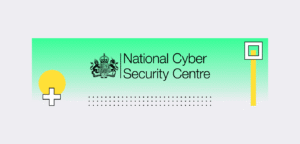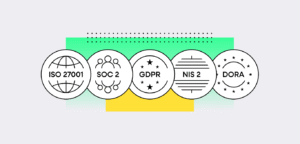Every October, World Standards Day passes with little fanfare. Perhaps it’s because for many, it evokes images of bureaucratic paperwork, dry acronyms and endless technical committees. Yet behind the scenes, standards quietly govern the way we trade, innovate and build trust. They are, in a sense, the invisible scaffolding of the global economy.
For too long, though, standards have been misunderstood, lumped in with “compliance” and dismissed as tick-box exercises, certificates to appease regulators or documents to keep auditors from asking difficult questions. In 2025, clinging to that perception is more than outdated. It’s potentially risky.
As businesses face increasingly complex threats and manage the rapid and at times confusing evolution of technology and regulatory demands, standards and frameworks are, in fact, not the red tape they’re wrongly perceived as, but the foundations of effective resilience, efficiency and long-term growth.
The Expanding Attack Surface
This year’s State of Information Security Report sheds some light on the scale of the challenge. Organisations are doubling down on digital transformation to survive economic uncertainty and compete in an increasingly AI-driven economy. But with every new tool, app and connected device, the corporate attack surface expands.
- 41% say managing third-party risk is a top challenge.
- 39% cite securing emerging technologies, such as AI.
- 37% struggle with cloud security.
- 40% identify shadow IT as the most common challenge they face from employees
The consequences are already being felt. More than 61% of organisations admit a third-party security incident hit them in the past year. Nearly three-quarters (71%) received a regulatory fine for a data breach, with 30% paying over £250,000.
Against this backdrop, standards like ISO 27001 for information security, ISO 27701 for data privacy, and the more recently introduced ISO 42001 for AI are less about certification and more about control. They offer a structured, risk-based way to bring sprawling risks under control, aligning cybersecurity, privacy, and AI governance into a single, coherent, continuously improving strategy.
From Compliance to Resilience
Compliance with standards has long been a defensive measure, a way to meet the letter of the law, avoid fines, and demonstrate a baseline of responsibility to regulators. That remains important, especially as penalties rise and boards face growing scrutiny.
But organisations that treat compliance as a one-off exercise, a certificate to renew or an audit to pass, miss its real potential. When grounded in recognised standards and used as a continuous framework for improvement, compliance becomes a driver of resilience, efficiency and even profitability.
Modern standards, such as ISO 27001, ISO 27701, and ISO 42001, are designed with that in mind. They no longer define success as meeting a fixed requirement, but as maintaining an ongoing commitment to resilience and adaptation. They expect organisations to anticipate change, respond quickly and demonstrate control.
Regulators are following the same trajectory. In Europe, the NIS 2 Directive and DORA place direct accountability for cyber resilience on senior management, while the UK’s forthcoming Cyber Security and Resilience Bill will give the government stronger powers to enforce it. Boards are no longer accountable on paper; they must prove that resilience is embedded in how the business operates.
And resilience cannot be bought in a crisis. It must be built. It’s a measure of whether a business can continue operating when the worst happens, and it’s fast becoming the benchmark of competence for regulators, investors, and customers alike. In our report, 41% of organisations identified digital resilience as their top challenge. The consequences of falling short are stark: 86% of breach victims last year experienced operational disruption, from broken customer services to halted production lines.
This is where standards prove their value. ISO 27001 encourages organisations to think beyond compliance and embed a risk-based approach, building systems that are flexible enough to address new threats as they emerge. ISO 27701 extends accountability to the handling of personal data, reducing exposure to the reputational and legal fallout that results from privacy violations. And ISO 42001 sets guardrails for the responsible use of AI, a field where regulators and businesses are still working out how to keep pace with the rapid development.
Together, these standards move organisations from a compliance-first posture to one rooted in resilience. They become strategic assets that enable organisations to build systems capable of withstanding disruption, protecting customers, and maintaining trust when it matters most.
Trust as the New Currency
If resilience is the foundation, trust is now the currency of successful businesses. Customers, investors and regulators no longer take companies at their word; they expect evidence that businesses are doing the right thing.
That shift is already paying dividends for organisations that see compliance and standards as business enablers rather than obligations. According to our 2025 State of Information Security Report, more than four in ten businesses now link compliance with standards directly to customer retention. Almost half say it has improved the quality of their decision-making, while over a third report tangible cost savings from fewer security incidents.
These figures underscore a shift in mindset: compliance and standards are no longer viewed solely as a cost of doing business, but as enablers of trust, efficiency, and growth.
That expectation is shaping business outcomes. For startups, trust can be the deciding factor in securing funding. For scale-ups, it unlocks enterprise contracts. For multinationals, it holds complex supply chains together. Increasingly, trust, not size or legacy, determines who businesses choose to partner with.
Standards help formalise this trust. Choosing to comply with ISO 27001 or SOC 2 provides independent proof that an organisation’s systems have been tested, its governance has been scrutinised, and its controls are being continually improved. In an era where a single misplaced click can trigger reputational damage, this form of assurance carries significant weight.
Standards as Strategy, Not Burden
The notion that standards slow businesses down is another persistent myth. In practice, when properly implemented, they do the opposite. Standards streamline operations by reducing duplication, aligning departments, and cutting through the tangle of overlapping regulations.
They also provide something less tangible but more valuable: consistency. In sprawling organisations and global supply chains, standards establish a common baseline of assurance. Instead of every team or every supplier interpreting “good practice” differently, standards create a shared language for risk, responsibility, and resilience and ensure everyone is working to the same expectations.
The challenge lies less in the standards themselves and more in how they are adopted. Too often, compliance is viewed as a one-time task rather than a continuous process of improvement. Without senior buy-in, it becomes reactive and fragmented. With leadership support, however, standards evolve into something far more powerful: a framework for growth, resilience and trust that aligns people, processes and partners around a single, strategic definition of “good”.
Beyond the Checkbox
World Standards Day should be more than a calendar footnote. It should serve as a reminder to move away from the idea of standards as static documents and embrace standards as living frameworks that get revised, adapted, and extended to keep pace with new threats and technologies.
The organisations that embrace this reality are not burdened by compliance; they are enabled by it. They build resilience into their operations, win trust in crowded markets, and open doors to new opportunities.
Standards, in that sense, are not the end of the journey. They are the engine that powers it. And in a world where unpredictability is the only constant, investing in that engine may prove the most valuable strategic decision a business can make.

















